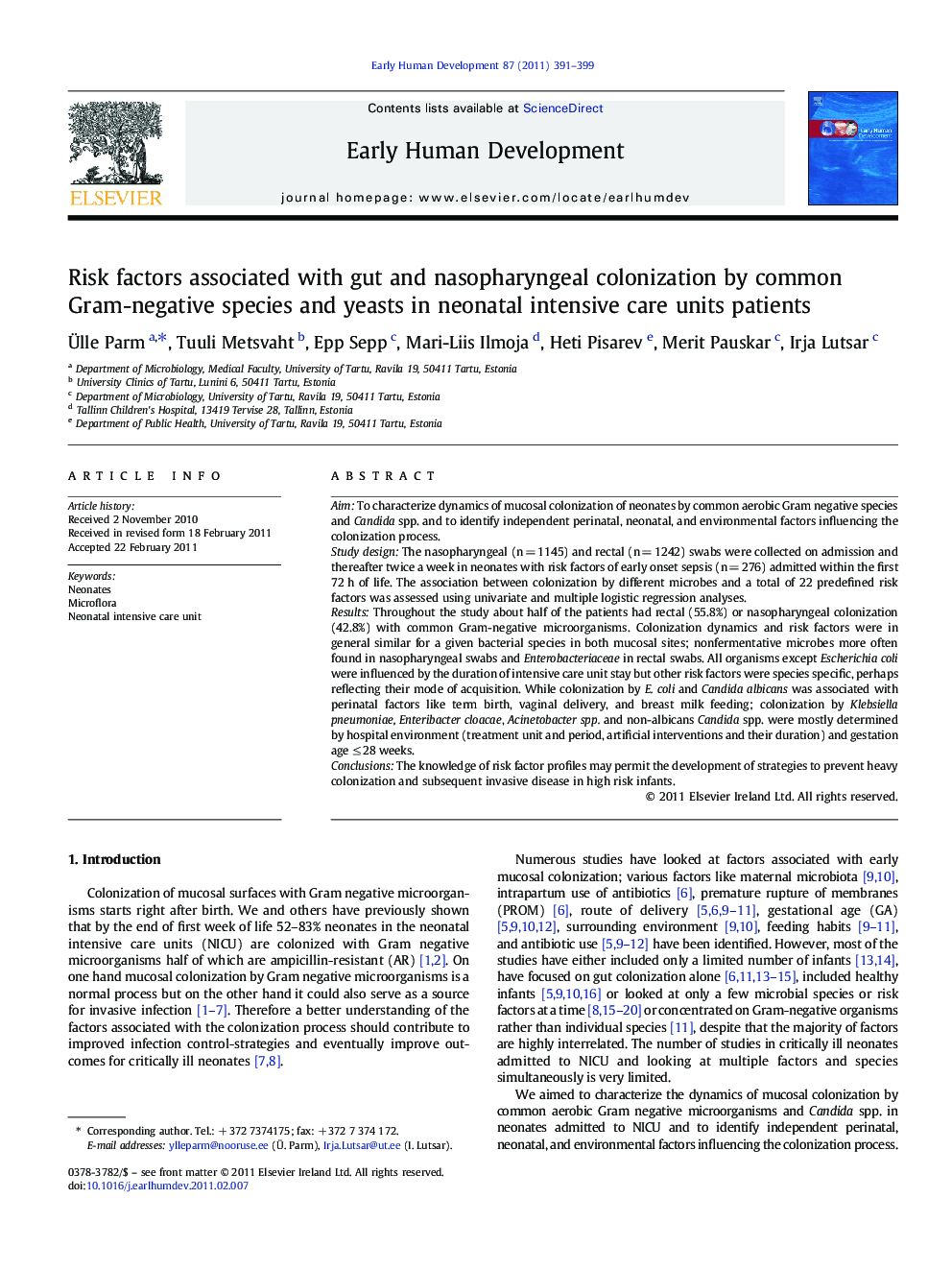| Article ID | Journal | Published Year | Pages | File Type |
|---|---|---|---|---|
| 3917522 | Early Human Development | 2011 | 9 Pages |
AimTo characterize dynamics of mucosal colonization of neonates by common aerobic Gram negative species and Candida spp. and to identify independent perinatal, neonatal, and environmental factors influencing the colonization process.Study designThe nasopharyngeal (n = 1145) and rectal (n = 1242) swabs were collected on admission and thereafter twice a week in neonates with risk factors of early onset sepsis (n = 276) admitted within the first 72 h of life. The association between colonization by different microbes and a total of 22 predefined risk factors was assessed using univariate and multiple logistic regression analyses.ResultsThroughout the study about half of the patients had rectal (55.8%) or nasopharyngeal colonization (42.8%) with common Gram-negative microorganisms. Colonization dynamics and risk factors were in general similar for a given bacterial species in both mucosal sites; nonfermentative microbes more often found in nasopharyngeal swabs and Enterobacteriaceae in rectal swabs. All organisms except Escherichia coli were influenced by the duration of intensive care unit stay but other risk factors were species specific, perhaps reflecting their mode of acquisition. While colonization by E. coli and Candida albicans was associated with perinatal factors like term birth, vaginal delivery, and breast milk feeding; colonization by Klebsiella pneumoniae, Enteribacter cloacae, Acinetobacter spp. and non-albicans Candida spp. were mostly determined by hospital environment (treatment unit and period, artificial interventions and their duration) and gestation age ≤ 28 weeks.ConclusionsThe knowledge of risk factor profiles may permit the development of strategies to prevent heavy colonization and subsequent invasive disease in high risk infants.
